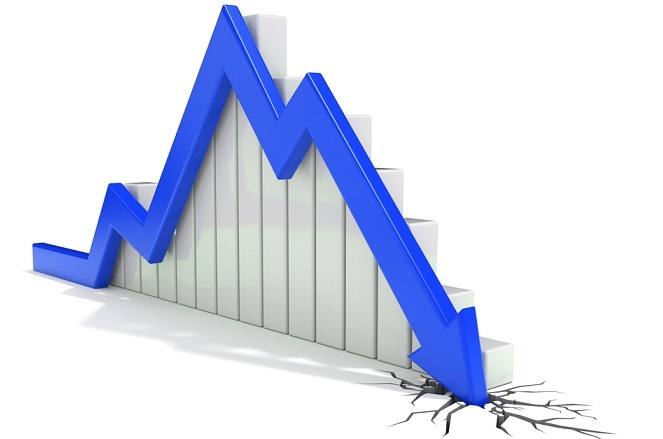
 Data Structure
Data Structure Networking
Networking RDBMS
RDBMS Operating System
Operating System Java
Java MS Excel
MS Excel iOS
iOS HTML
HTML CSS
CSS Android
Android Python
Python C Programming
C Programming C++
C++ C#
C# MongoDB
MongoDB MySQL
MySQL Javascript
Javascript PHP
PHP
- Selected Reading
- UPSC IAS Exams Notes
- Developer's Best Practices
- Questions and Answers
- Effective Resume Writing
- HR Interview Questions
- Computer Glossary
- Who is Who
Dividends in Arrears
Introduction
Buying stocks is an excellent way to accumulate wealth and generate passive income. When you invest in a company, you become a shareholder and have a stake in its profits.

These earnings are frequently paid to shareholders as dividends. Unfortunately, there are times when businesses cannot pay dividends to their shareholders, resulting in dividend arrears.
Dividends in Arrears: Explained
Dividends are a way for organizations to distribute earnings to their shareholders. When a firm announces a dividend, it saves a portion of its income to pay to shareholders. But, sometimes, firms may find themselves in a scenario whereby they fail to pay the declared dividend, which can end in a situation known as "dividends in arrears."
Dividends in arrears arise when a company cannot pay a declared dividend on the scheduled payment date. It could happen for various reasons, such as financial hardship or a company's decision to cut costs. When this occurs, the unpaid dividend is called "dividends in arrears."
Characteristics of Dividend in Arrears
Dividends in arrears can happen if a business experiences financial difficulties or decides to save money instead of paying dividends.
Dividends in arrears have the following characteristics ?
Unpaid Dividends ? Unpaid dividends are delayed dividends issued either by the company's board of directors or by the company itself but not paid to shareholders by the payment date. These dividends are owed to the company's shareholders.
Accumulation over time ? Unpaid dividends continue to accrue until they are paid. For example, if a company declares a dividend of $1 per share but only pays 50 cents per share, the remaining 50 cents will indeed be deferred.
No fixed due date ? There is no set date for the delayed payment of dividends. You remain unpaid until the company addresses their issues and generate profits for consecutive years.
No payment guarantee ? Dividends that have yet to be paid are not guaranteed to be paid, and stockholders are not guaranteed to receive the whole dividend amount. A corporation's economic situation can improve or worsen, and it may not have the cash to pay late dividends.

No voting rights ? Dividends in arrears do not give shareholders voting rights over unpaid dividends. You may be unable to vote on board members, board compensation, or other critical issues.
Company balance sheet liabilities ? On the company's balance sheet, unpaid dividends are listed as liabilities. They symbolize the company's debt to its shareholders.
Stock price impact ? The price of the company's stock could be affected by a dividend that is still pending. When you believe the company is in arrears and unable to pay dividends, you may sell the shares, causing the stock price to fall.
Investor risk ? Preference shareholders are the first class of investors to face the risk in case of dividends in arrears. A company's continued accumulation of dividend arrears could indicate troubled finances or liquidity problems.
Why do dividends in arrears occur?
Dividends in arrears can occur for a variety of reasons like the business experiencing financial turbulence, unable to manage the cash flows and payments properly, decrease in profits for the respective year, board of directors decided to reinvest profits in other projects, etc.

While this can be disheartening for investors, they are often signs that an organization faces monetary troubles or other difficulties. Yet, the benefits of dividend arrears will only be given to new investors but not the existing ones.
Computation of Dividends in Arrears
The calculation of profits falling behind depends on the number factors. For instance, the dividends in arrears would amount to $1,000 if a company failed to pay a $1 dividend on 1,000 shares. If new dividends are declared, the dividends in arrears are paid first. They are recorded as short-term liability in the company's balance sheet.
Examples of Dividends in Arrears
Companies can distribute their profits to shareholders through dividends. These payments are typically made frequently and on a predetermined schedule. However, a company may occasionally fall behind on dividend payments, resulting in "dividends in arrears." It can have significant repercussions for the business and its shareholders when it occurs. This section will look at real-world examples of dividends in arrears, including how they start and end and what they can mean for you as an investor.
Source
Example 1
XYZ Company has paid a $0.25 dividend per share quarterly. However, the company could not pay dividends for the previous two quarters due to financial issues. As a result, each share would receive $0.50 in dividends that have not been paid ($0.25 x 2).
Example 2
The dividend policy of ABC Company is to distribute $2 per share annually. Yet, instead of paying dividends this year, the board of directors decided to reinvest the profits in the business. As a result, each share would receive $2 in dividends that have not been paid.
Conclusion
When a company has financial difficulties or the board of directors decides to reinvest profits back into the business rather than paying dividends, dividends in arrears can occur. Dividends can impact a company's credit rating and financial health in arrears, considered a liability until paid. Before investing in the stock market, investors need to consider a company's financial health and dividend history.
FAQs
Q1. What is the difference between dividends in arrears and cumulative dividends?
Ans. A type of preferred stock known as cumulative dividends guarantees the payment of missed future dividends. In contrast, unpaid dividends on common stock are called "dividends in arrears."
Q2. Are dividends in arrears a bad sign for investors?
Ans. Yes, if the company pays dividends late, you should be worried because it may be experiencing financial difficulties. It is critical to consider the company's specific circumstances and financial health.
Q3. How can investors protect themselves from dividends in arrears?
Ans. By diversifying their portfolios and investing in businesses with a solid financial history and dividend policies, you can safeguard yourself against dividends in arrears. Investors can also keep an eye on a company's credit rating and financial statements to stay aware of any potential financial difficulties.

